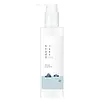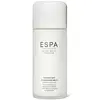What's inside
What's inside
 Key Ingredients
Key Ingredients

No key ingredients
 Benefits
Benefits

 Concerns
Concerns

 Ingredients Side-by-side
Ingredients Side-by-side

Water
Skin ConditioningEthylhexyl Palmitate
EmollientGlycerin
HumectantDecyl Glucoside
CleansingCetyl Ethylhexanoate
EmollientDiisostearyl Malate
EmollientArachidyl Alcohol
EmollientSea Water
HumectantHyaluronic Acid
HumectantHydrolyzed Hyaluronic Acid
HumectantSodium Hyaluronate
HumectantCeramide NP
Skin ConditioningCeramide Ns
Skin ConditioningCeramide AP
Skin ConditioningCeramide As
Skin ConditioningCeramide EOP
Skin ConditioningPhytosphingosine
Skin ConditioningDipotassium Glycyrrhizate
HumectantAllantoin
Skin ConditioningPanthenol
Skin ConditioningGlyceryl Stearate
EmollientEthylhexylglycerin
Skin ConditioningGlucose
HumectantDipropylene Glycol
HumectantArachidyl Glucoside
EmulsifyingHydroxyacetophenone
AntioxidantSodium Stearoyl Glutamate
CleansingAcrylates/C10-30 Alkyl Acrylate Crosspolymer
Emulsion StabilisingCaprylyl Glycol
EmollientButylene Glycol
HumectantHydrogenated Lecithin
EmulsifyingRosmarinus Officinalis Leaf Oil
MaskingCitrus Aurantium Bergamia Fruit Oil
MaskingLavandula Hybrida Oil
EmollientJuniperus Virginiana Oil
MaskingStearic Acid
CleansingTocopherol
Antioxidant1,2-Hexanediol
Skin ConditioningXanthan Gum
EmulsifyingDisodium EDTA
Cetearyl Alcohol
EmollientBehenyl Alcohol
EmollientCholesterol
EmollientCitric Acid
BufferingWater, Ethylhexyl Palmitate, Glycerin, Decyl Glucoside, Cetyl Ethylhexanoate, Diisostearyl Malate, Arachidyl Alcohol, Sea Water, Hyaluronic Acid, Hydrolyzed Hyaluronic Acid, Sodium Hyaluronate, Ceramide NP, Ceramide Ns, Ceramide AP, Ceramide As, Ceramide EOP, Phytosphingosine, Dipotassium Glycyrrhizate, Allantoin, Panthenol, Glyceryl Stearate, Ethylhexylglycerin, Glucose, Dipropylene Glycol, Arachidyl Glucoside, Hydroxyacetophenone, Sodium Stearoyl Glutamate, Acrylates/C10-30 Alkyl Acrylate Crosspolymer, Caprylyl Glycol, Butylene Glycol, Hydrogenated Lecithin, Rosmarinus Officinalis Leaf Oil, Citrus Aurantium Bergamia Fruit Oil, Lavandula Hybrida Oil, Juniperus Virginiana Oil, Stearic Acid, Tocopherol, 1,2-Hexanediol, Xanthan Gum, Disodium EDTA, Cetearyl Alcohol, Behenyl Alcohol, Cholesterol, Citric Acid
Water
Skin ConditioningGlycerin
HumectantGlycine Soja Oil
EmollientPrunus Amygdalus Dulcis Oil
Skin ConditioningStearic Acid
CleansingAlthaea Officinalis Root Extract
Skin ConditioningPhenoxyethanol
PreservativeHydrogenated Ethylhexyl Olivate
EmollientSclerotium Gum
Emulsion StabilisingChamomilla Recutita Flower Extract
MaskingCetearyl Alcohol
EmollientBenzyl Alcohol
PerfumingParfum
MaskingXanthan Gum
EmulsifyingHydrogenated Olive Oil Unsaponifiables
EmollientPelargonium Graveolens Oil
MaskingEthylhexylglycerin
Skin ConditioningStyrax Tonkinensis Resin Extract
PerfumingGeraniol
PerfumingSodium Hydroxide
BufferingLinalool
PerfumingWater, Glycerin, Glycine Soja Oil, Prunus Amygdalus Dulcis Oil, Stearic Acid, Althaea Officinalis Root Extract, Phenoxyethanol, Hydrogenated Ethylhexyl Olivate, Sclerotium Gum, Chamomilla Recutita Flower Extract, Cetearyl Alcohol, Benzyl Alcohol, Parfum, Xanthan Gum, Hydrogenated Olive Oil Unsaponifiables, Pelargonium Graveolens Oil, Ethylhexylglycerin, Styrax Tonkinensis Resin Extract, Geraniol, Sodium Hydroxide, Linalool
 Reviews
Reviews

Ingredients Explained
These ingredients are found in both products.
Ingredients higher up in an ingredient list are typically present in a larger amount.
Cetearyl alcohol is a mixture of two fatty alcohols: cetyl alcohol and stearyl alcohol. It is mainly used as an emulsifier. Emulsifiers help prevent the separation of oils and products. Due to its composition, it can also be used to thicken a product or help create foam.
Cetearyl alcohol is an emollient. Emollients help soothe and hydrate the skin by trapping moisture.
Studies show Cetearyl alcohol is non-toxic and non-irritating. The FDA allows products labeled "alcohol-free" to have fatty alcohols.
This ingredient is usually derived from plant oils such as palm, vegetable, or coconut oils. There is debate on whether this ingredient will cause acne.
Due to the fatty acid base, this ingredient may not be Malassezia folliculitis safe.
Learn more about Cetearyl AlcoholEthylhexylglycerin (we can't pronounce this either) is commonly used as a preservative and skin softener. It is derived from glyceryl.
You might see Ethylhexylglycerin often paired with other preservatives such as phenoxyethanol. Ethylhexylglycerin has been found to increase the effectiveness of these other preservatives.
Glycerin is already naturally found in your skin. It helps moisturize and protect your skin.
A study from 2016 found glycerin to be more effective as a humectant than AHAs and hyaluronic acid.
As a humectant, it helps the skin stay hydrated by pulling moisture to your skin. The low molecular weight of glycerin allows it to pull moisture into the deeper layers of your skin.
Hydrated skin improves your skin barrier; Your skin barrier helps protect against irritants and bacteria.
Glycerin has also been found to have antimicrobial and antiviral properties. Due to these properties, glycerin is often used in wound and burn treatments.
In cosmetics, glycerin is usually derived from plants such as soybean or palm. However, it can also be sourced from animals, such as tallow or animal fat.
This ingredient is organic, colorless, odorless, and non-toxic.
Glycerin is the name for this ingredient in American English. British English uses Glycerol/Glycerine.
Learn more about GlycerinStearic Acid is a fatty acid. It is an emollient, emulsifier, and texture enhancer.
As an emollient, stearic acid helps soften skin. It aids the skin's protective barrier by preventing water loss. It also provides a gentle cleansing effect without stripping away natural oils.
Stearic acid may also be used to enhance the texture of products. It can add volume and stabilize ingredients such as water and oil. This can help water and oil ingredients from separating.
Sources of stearic acid include animal or vegetable fats/oils such as coconut or shea. It can be naturally found in butter, cocoa butter, shea butter, vegetable fats, and animal tallow.
This ingredient may not be Malassezia folliculitis, or fungal-acne safe.
Learn more about Stearic AcidWater. It's the most common cosmetic ingredient of all. You'll usually see it at the top of ingredient lists, meaning that it makes up the largest part of the product.
So why is it so popular? Water most often acts as a solvent - this means that it helps dissolve other ingredients into the formulation.
You'll also recognize water as that liquid we all need to stay alive. If you see this, drink a glass of water. Stay hydrated!
Learn more about WaterXanthan gum is used as a stabilizer and thickener within cosmetic products. It helps give products a sticky, thick feeling - preventing them from being too runny.
On the technical side of things, xanthan gum is a polysaccharide - a combination consisting of multiple sugar molecules bonded together.
Xanthan gum is a pretty common and great ingredient. It is a natural, non-toxic, non-irritating ingredient that is also commonly used in food products.
Learn more about Xanthan Gum